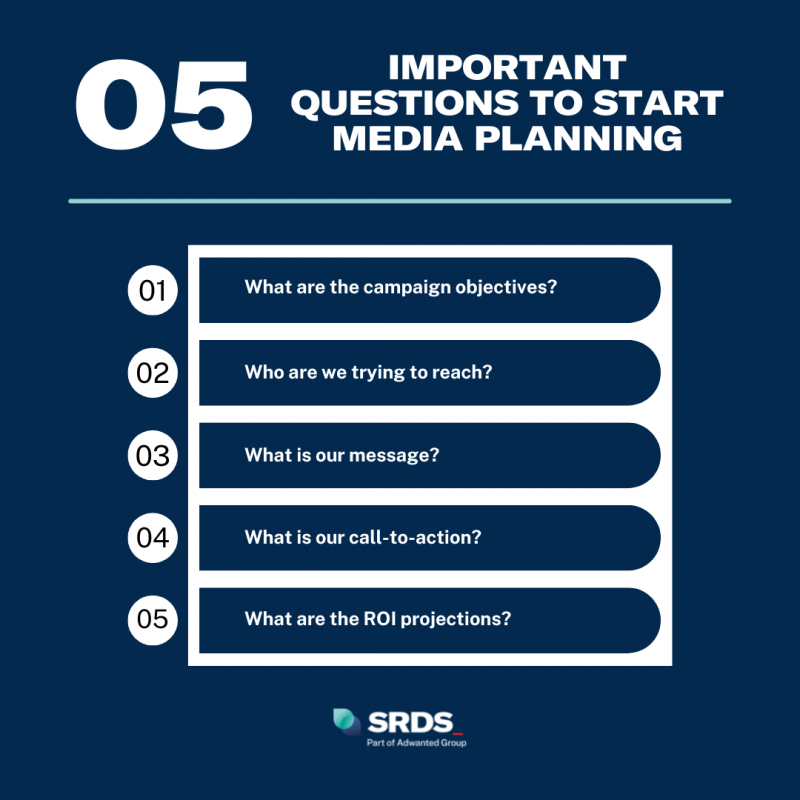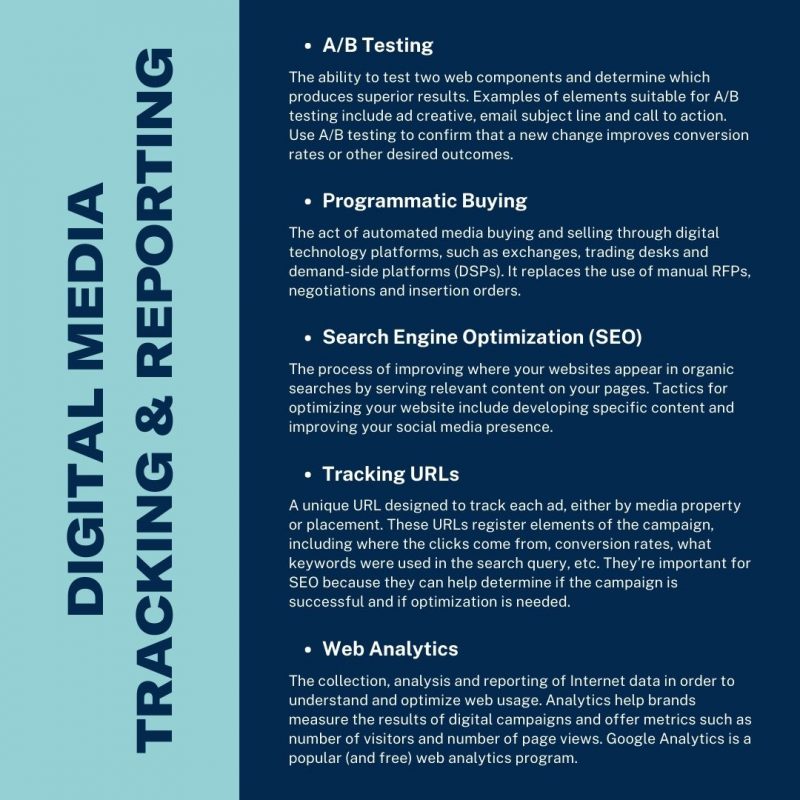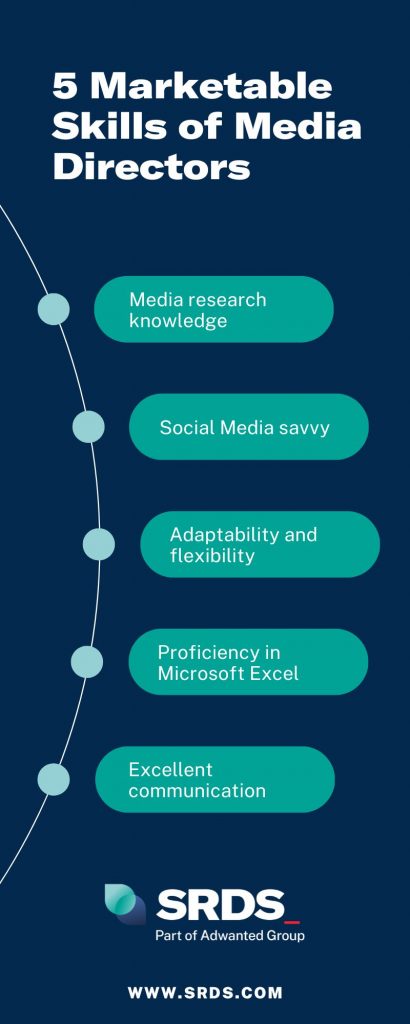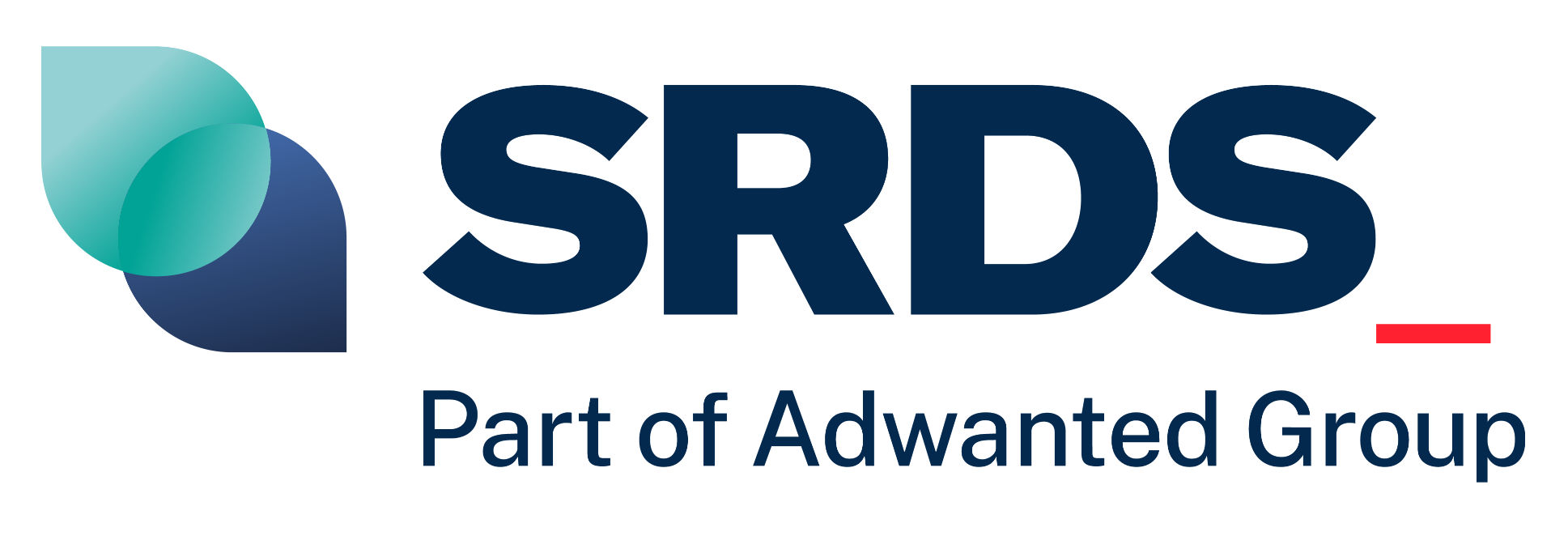Best Practices for Successful Campaigns
10 Best Practices for Digital Media Planning
All successful media campaigns begins with planning and strategy. Here are ten best practices to turn you into a digital media planning hero.
Digital media planning is the process of strategizing, selecting, and coordinating digital media channels and platforms to achieve specific marketing and communication goals. This includes identifying target audiences, setting objectives, researching and selecting appropriate digital platforms, determining a budget, creating and executing a content strategy, and measuring and analyzing the results.
So, Marketers, put on (yet another) hat: digital media planning. The job title “marketer” may as well be synonymous with “jack of all trades.” Today’s marketers must see the big picture, anticipate industry trends, manage vendor relationships, plan campaigns, and work with people from all business departments.
Despite the challenges, most marketers haven’t run to the hills. Quite the reverse. The marketers we know love their jobs because they get to wear so many hats in an industry that’s becoming more digital every day. And while the digital revolution has transformed marketing and invites new and exciting opportunities for businesses, it also demands new skills from marketers and agency professionals.
Do you need to be a “digital media planner”? Have you ever developed, executed or monitored online ad campaigns? How about for social or mobile? Display? Search? Have you ever worked with an online ad network? Understandably, “digital media planning” probably isn’t listed as a skill on your LinkedIn profile yet — even if you have run a few campaigns.
Further, as programmatic buying rises in popularity within online advertising, it’s important to keep in mind that the human element is still critical. Every successful digital campaign begins with thoughtful planning and a sound strategy. When you meet that fork in the road and decide whether to work with a publisher/ad network or explore automated options, recognize that while the paths are different, best practices still apply.
That’s where this guide comes in, with ten essential best practices to turn you into a digital media planning hero for your brand.
Craft Your Comprehensive Digital Media Plan
Caution: No diving into the digital pool yet. It’s cold, it’s deep and there’s a high chance of belly flopping. While considering digital as a potential medium for a brand’s ad campaign is a no-brainer, objectives should always dictate strategy. As with any campaign, develop a blueprint based on research and analysis.

Each one of these questions requires a fair amount of deliberation. Several should be tackled by a team, especially the initial planning steps. A few minds brain- storming — all of whom should be brand ambassadors will help inform and craft the plan. Consider bringing in others from beyond the marketing and advertising department, such as web managers, communications execs and even sales and IT. Once the key parties are looped in, establish the campaign objective(s). What will success look like in the marketplace and in your ledger? Your campaign objective dictates whether digital is the right medium for execution.
Your campaign objective will dictate whether digital is the right medium for execution.
Many digital campaigns fail due to insufficient planning. This planning stage can (and should) take a fair amount of time. Because there are fewer standards in digital media, online ad campaigns usually require the media plan to be crafted before the creative can even be touched — a major differentiator from traditional advertising.
Hyper-Targeting and Developing Your Audience
While developing a campaign plan, identify the target audience as specifically as you can. Be granular. Focus on the prospects that are the most relevant to the campaign goals, and then use research tools and any established relationships with media brands to determine where your audience engages online. Digital targeting can be laser-focused and high-impact, while TV is often limited to high-reach. The web can be the most personal medium on earth, but you have to know who you’re reaching.
For example, let’s say you’re a marketer for an online university and your campaign objective is to attract students for teaching certifications. Specifically, you would like to reach middle-aged, college-educated women who are looking for a career change. What sites do they visit? Carefully examine your brand’s existing web analytics to see how your current audience is interacting with your site and what is resonating. Supplement this with outside research on your target group, including audience demographic metrics and consumer behavior data from industry leaders. Use search engine data like keyword research. Social media can also provide a wealth of knowledge about your prospects.
Keep in mind that it’s possible to conduct all the audience research you can, and your results may still not be what you predicted after execution. But don’t get discouraged.
Let’s say the teaching certification ad runs on several sites, and your research indicated that the highest performers would come from aspirational websites. But the analytics show that the highest click-through-rates are coming from horoscope sites. It can and may happen.
The bottom line is that while a digital plan requires data-driven hyper-targeting, audience behavior can be unpredictable. Keep in mind that it’s a process. Audience profiling is ongoing as you learn more. That’s why quick adaptability is one of the strengths of a digital campaign.
Exhaustive Online Media Planning Research
In digital advertising, there is no such thing as too much research. It’s more likely that you’ll run out of time before data. Especially if this is the first time planning an online campaign, use all the resources the Internet offers, including white papers, case studies and the campaigns of your competitors. Be open to agency and vendor pitches and talk to industry experts. LinkedIn can be a fantastic resource to see what your peers are discussing and any recommendations they have on planning tools, contacts and ad networks. Look at ads on the sites that seem to make sense for your targets to visit, check out paid search copy, explore ad networks and their offerings and analyze the marketing emails sent to you.
It’s also critical to become familiar with several aspects of digital advertising, including ad placement, ad distribution platforms, the basics of programmatic buying and monitoring tools. After conducting audience research, explore what digital format fits best for the campaign. It may sound old-fashioned, but a good pro/con list can really come in handy. An online advertising campaign may include banner ads, sponsored content, sponsorships or video ads.
The Unique Power of Digital: Tracking and Reporting
One reason we urge marketers and agencies to consider digital is because of the real-time tracking and reporting capabilities, unlike anything in traditional media. These functions give you the data needed to determine if your campaign is successful and when to make changes. Here are a few of the tricks to consider.

While real-time tracking of click and conversion results from email, paid search and other online media campaigns is critical for success, constantly checking the metrics may lead you to panic and prematurely change the plan. If you conducted research, did the prep work and developed the target audience, give the campaign and the analytics some time to pan out. But when all else fails, optimize.
Maximize Impact with Optimization
Optimization is the real-time process of viewing and analyzing advertising campaign metrics, such as impressions, CTR or conversions and then making changes to the campaign in order to improve the results. The nature of print makes campaign optimization a long-term process, if not an impossible one. But in the online world, it’s not only feasible, it’s expected. So marketers must plan time and resources into the ongoing campaign for optimization. While there isn’t a golden rule for determining when the right time is for making changes to your campaign, the move to optimize should always be informed by metrics.
 The most common digital optimization tactics that don’t involve too much work are changes to the creative, ad copy and landing page. Other larger optimizations include moving from media outlets to other sites/ad networks, updating the target audience and altering any behavioral targeting imposed.
The most common digital optimization tactics that don’t involve too much work are changes to the creative, ad copy and landing page. Other larger optimizations include moving from media outlets to other sites/ad networks, updating the target audience and altering any behavioral targeting imposed.
Although optimization is labor-intensive, it can translate into tremendous savings and efficiency gains. Specifically, it can minimize time and money spent on non-performing sites and placements and boost ROI by focusing dollars on successful placements. Planning for optimization and ultimately executing divides successful campaigns from those that fizzle out.
Three Proactive Plans for Media Campaign Success
With every digital campaign, you should develop three calculated plans. The first is campaign launch, next up are optimization strategies and the third is a major overhaul plan. While this may sound like excessive preparation, the reality is that most campaign launches don’t perform perfectly right away. Having a few primed tricks up your sleeve ensures that you’re ready to optimize if necessary.
Since you’ve already done the background work, you are ready to plan the launch. Objectives should dictate the right digital medium, and target audience will help inform creative and message. Online advertising allows for more creativity than other mediums. If an ad can be created, chances are there is a publisher willing to try it. Don’t be afraid to shake it up and test things out. The campaign launch plan should be the most creative (with research that backs your choices).
Even though you’ll invest a lot of time and energy developing this plan, we urge you not to get overly attached to the message, creative and CTA. The benefit of a digital plan is flexibility. Chances are you will need to make changes, so don’t take it personally when the call to action you wrote and designed doesn’t have a 100% success rate.
Don’t be scared if the launch plan isn’t perfect. The vast majority require at least some optimization. Keep in mind that in digital, there are less than 3 seconds to grab the target. Look at the top performing ad, and make slight changes to it while keeping the original in play as well.
Cross-Channel Convergence
Planning an online campaign is similar to planning a well-rounded traditional campaign because there are so many different digital channels. Follow the analogy: search is fairly traditional, banners and display are print, video is akin to TV and email equals direct mail. Thinking holistically in these terms might give you a better sense of what digital methods will work for the brand’s campaign goals.
Your digital media plan should still be informed by how your brand is using other media channels and vice versa. Synergy between traditional and digital channels may be possible with a dash of creativity. For example, a TV commercial might work well as an online video ad. Likewise, on-the-street marketing and social tie together well since they leverage one-on-one interaction.

© Old Spice
Stay on the lookout for integration possibilities. Be inquisitive. If the publisher of the site where you’re running banner ads also offers sponsored posts and email promotions, why not consider those too? Always look into the various opportunities across a media property’s entire spectrum of outreach vehicles, including website placements, email, direct mail, print, event sponsorships and podcasts. What you can plan, buy and deploy is infinite — and digital may be the entrance point.
Digital is unique in the sense that it’s social, it’s mobile, it’s local, it’s everywhere we look. That’s what makes it tricky, but also gives it an edge. Digital is the best place for “out-there” ideas.
When you begin to get inspired, that’s when the magic happens and how campaigns go viral. Take the Old Spice Guy, for example. The original commercial was viewed nearly 20 million times across several media and more than 44 million times on YouTube.
Beyond the Ad: Social Media, Your Website and Landing Pages
Always remember that just because a target doesn’t click on an ad or open your promo email, it doesn’t mean that the message didn’t get through. Perhaps you’re a marketer at an electronics company, and your latest campaign is for a brand-new refrigerator that holds more items than competitors’ and is within standard fridge measurements. You work long hours creating a campaign that includes multi-channel advertising, specifically a commercial and banner ad.
The campaign launches and shortly after, consumer Betty sees the ad on a popular website. She notices the ad, but doesn’t click it. Then the next day, she sees the product advertised during her mid-day TV break.
A few weeks later, Betty’s fridge breaks. Rather than getting it repaired, she remembers your ad. Betty visits your website, but can’t immediately figure out which fridge is the one she remembers from the ad. She goes to YouTube to see if she can find the commercial on your brand’s page there. No luck. She checks your Facebook page for a mention, and even Googles every keyword she can think of to find that fridge. She looks on Twitter, but zilch. Finally, her frustration can’t be restrained. She puts her iPad down, gives up and calls her repairman or your competitor.
This nightmare situation could happen if you don’t inspect your website, landing pages and social network profiles with a fine-tooth comb before campaign launch to create a stronger connection to the ads. Ad campaigns can and should be cross-promoted, or at very least mentioned in other media. The worst part about this cautionary tale is that you would never even know that it happened. Much of your time creating a digital campaign will be spent planning, creating and executing on the digital components themselves, but don’t make the mistake of overlooking your other digital media properties.
Much of your time creating a digital campaign will be spent planning, creating and executing on the digital components themselves, but don’t make the mistake of overlooking your other digital media properties.
The Fine Print: Out Clauses
Despite taking all the necessary precautions while planning a campaign, unforeseen circumstances can still arise. Though it may not be a preferred option, including an out clause may be the only way to prevent a marketing disaster.
Therefore, it’s essential to carefully review the details when collaborating with a publisher or ad network. Pay close attention to the campaign’s length, the full contract value, and the out clause. The out clause defines the required notice period for an advertiser or agency to terminate the campaign with the publisher or ad network.
Everything should be clear and spelled out. Don’t be afraid to ask questions before the digital handshake happens. Anything related to assure your control, optimize performance and protect your brand is on the table. Not only will this eliminate anxiety, it may actually make a big difference in dollars (and, quite frankly, your job).
Keep Learning
 Improving one’s online advertising abilities will remain critical for marketers of all types, particularly those involved in digital advertising, media planning, and campaign management. Our team recently queried SRDS.com users with the question, ‘What advice would you offer to new graduates seeking a media job at an agency?’
Improving one’s online advertising abilities will remain critical for marketers of all types, particularly those involved in digital advertising, media planning, and campaign management. Our team recently queried SRDS.com users with the question, ‘What advice would you offer to new graduates seeking a media job at an agency?’
We found out that the most marketable skills of tomorrow’s media directors are:
1. Media research knowledge
2. Social media savvy
3. Adaptability and flexibility
4. Proficiency in Microsoft Excel
5. Excellent communication
Staying on top of trends and sharing findings with team members may not often appear on your to-do list, but nevertheless it’s required. You must read about new technologies (targeting, mobile) as well as new trends. Even if you don’t plan to use them now, at least so you can consider them next quarter.
Conclusion
Whether you are a marketer looking to explore paid search advertising or dabble in promoted Tweets, these best practices can help you determine how to thoughtfully, purposefully and effectively gauge whether or not a digital media plan works best for your brand’s objectives. These points should provide you with standards on which you can evaluate your past campaigns, or can be used as benchmarks when determining which digital strategies should be incorporated into your next plan. And before you know it, your coworkers will be endorsing you on LinkedIn for digital media planning.
The SRDS Database
The SRDS Media database provides a wealth of data, research and intelligence on 22,000 U.S. websites that sell advertising, and online ad networks and exchanges. We connect media buyers with marketers so they can identify short-tail and long-tail digital advertising opportunities, understand the ad network ecosystem and contact sites with RFPs.
Agencies and brands use SRDS as an affordable, all-in-one resource for media planning and media buying. With SRDS, easily find and compare digital and traditional media across business, consumer, and geographic audiences. Agencies rely on this extensive set of data on U.S. media to make informed media buying decisions and initiate contact with media reps directly from the platform.



Stay In Touch